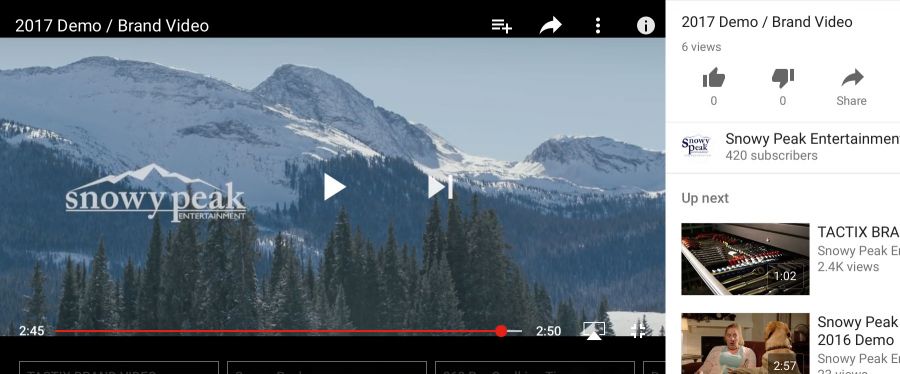In January of 2016 Robert Kyncl, the Chief Business Officer at YouTube gave a keynote speech at CES that focused on a few important trends and insights regarding the future of digital video. While another CES has come and gone, we think the information and ideas Robert shared a year and a half ago are still highly relevant.
Mr. Kyncl referenced YouTube a lot in his speech. Although this was an obvious pitch for YouTube, the company has become a dominant and innovative force in the digital video arena. So we think it’s worth keeping tabs on their activities.
Below the keynote, video is a summary of the four reasons why Robert believes digital video will win the decade.
Digital video is inherently MOBILE.
The consumption of video on mobile devices is growing rapidly. Research conducted by YouTube with Nielsen shows that the time 18 to 34-year-olds spent on TV fell 9% in 2015. Meanwhile, this same audience spent 48% more time on YouTube, with mobile viewing making up the largest source of growth. On YouTube, the average time people spent watching video on their mobile device was forty minutes in 2015, a gain of 50 percent year-on-year.
The growth of mobile video consumption can be attributed to technological advances. Smartphone screens are getting bigger, brighter and sharper. Today’s best phones can both display and record in 4K. At the same time, batteries last longer and data speeds are getting faster. And the audio capabilities are getting better. All of these innovations are creating phones that make the mobile video experience better than ever.
Digital video offers DIVERSITY
A key contributor to the growth of mobile video is the fact that you can choose to consume it on your own.
When we were kids we had to compromise with our parents or siblings when deciding what to watch in the living room. The big TV was in the living room and we had to negotiate what show to watch. Your kids don’t have to do that today. They can go to their rooms and watch whatever shows they love.
This trend has contributed to the rapid growth of amateur teenage stars, many of whom are debuting on YouTube. In fact, the most popular entertainers among highschoolers in 2015 weren’t movie actors or musicians. They were YouTube stars. Mobile phones have transformed the way we consume video into the way we consume books—you can find whatever interests you and consume it whenever and wherever you want.
Video is more important to music than ever before.
More than half of all teenagers use YouTube as their primary source for finding and listening to new artists, in large part because YouTube offers the largest music library available. YouTube has proven that music videos can become massive phenomena, whether they’re from established or emerging artists. When Adele released “Hello” in 2015 it hit 100 M views in just five days. That exposure helped propel her to the biggest first-week album sales ever.
The success of music on channels like YouTube has made video a crucial part of the music. It helps artists gain exposure, plan concerts and sell records and merchandise. Perhaps more importantly, artists can now earn money on YouTube for their music clips, as well as clips, covers, and parodies uploaded by their fans.
Digital video can provide a much, much more immersive and interactive experience than TV.
Virtual Reality (VR) video has become a great medium for immersive and interactive storytelling. But the success of VR requires four things to happen: (1) you need the camera technology to capture video in 3D and 360; (2) you need a storyteller who can create content using that technology; (3) you need a device for users to view it; and (4) you need a platform on which that content can live.
YouTube has made major investments and created strategic partnerships to become a leader in VR. First, they partnered with GoPro to create Odyssey, the first commercially available 3D-360 camera on the market. Second, they put VR cameras in their YouTube Spaces around the world as a way to encourage their partners to create richer, more interactive stories. They then made it easier and more affordable for viewers to enjoy VR by creating Cardboard. For just a couple of dollars, anyone can access a completely immersive VR experience that works with any smartphone. Finally, YouTube provided a place for VR content to live: YouTube. You can watch any video on YouTube in VR with Cardboard, making VR truly democratic.
These trends make it clear that digital video’s role in the communications arena is becoming increasingly important. Contact Snowy Peak Films today and let us help you produce the best video possible!
**Source: YouTube’s Keynote: 4 Reasons Why Digital Video Wins tubularinsights.com









